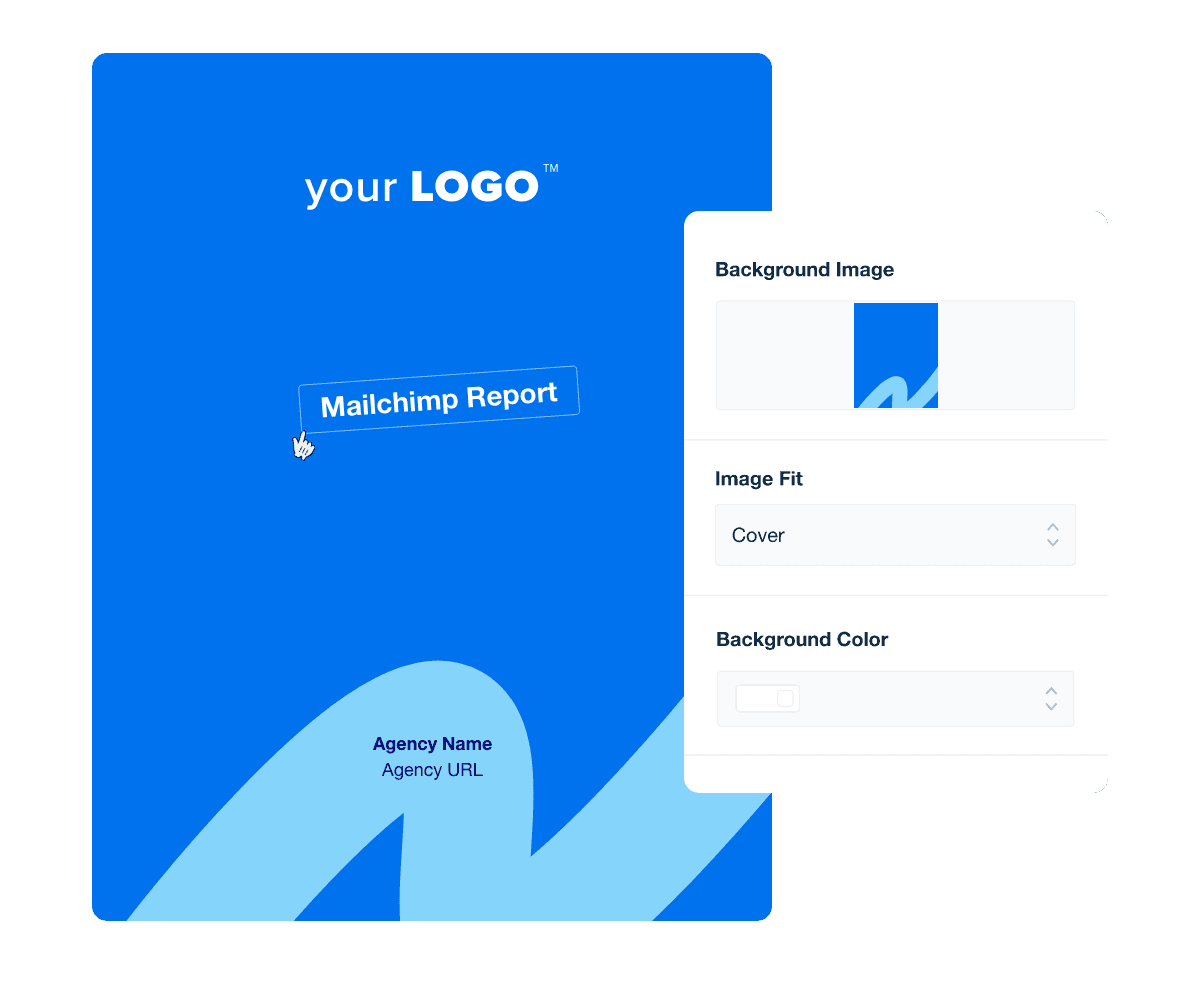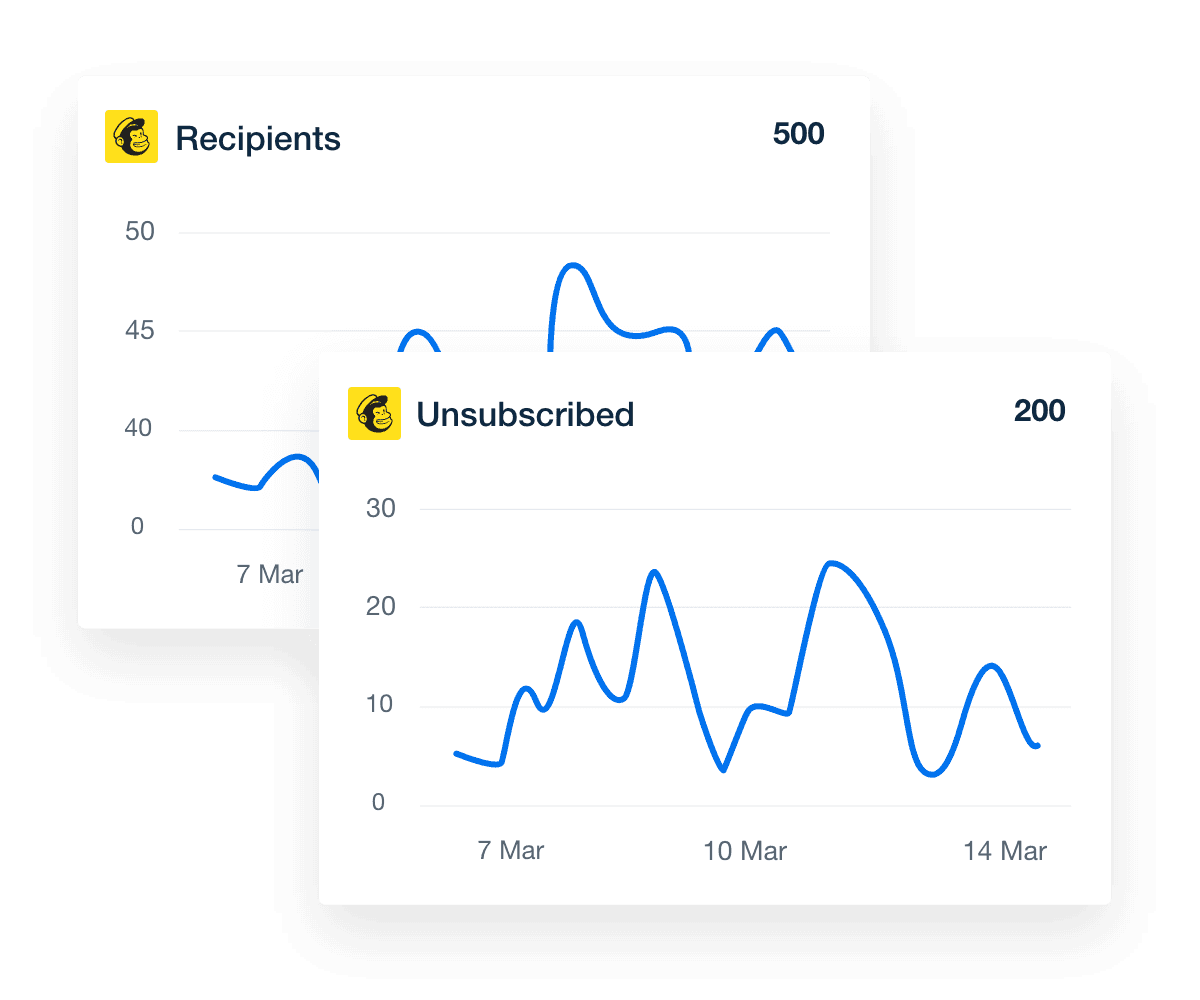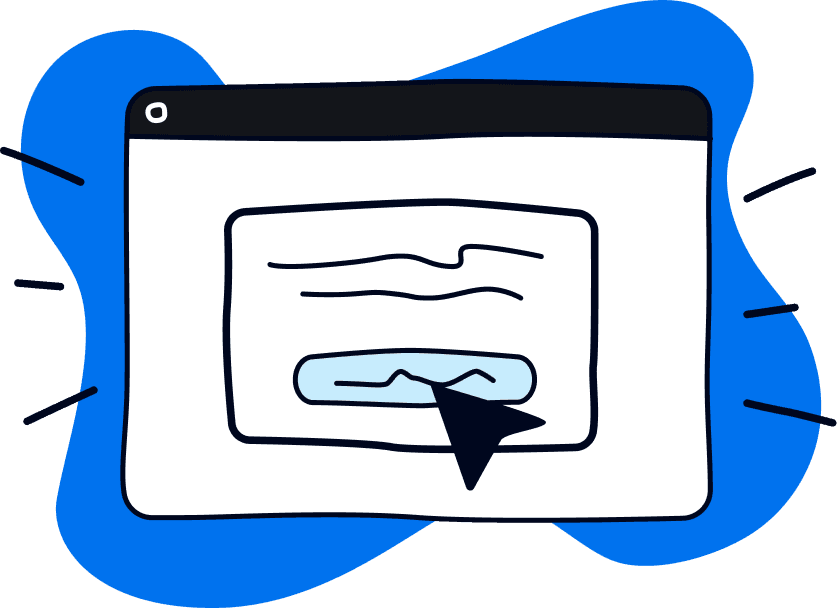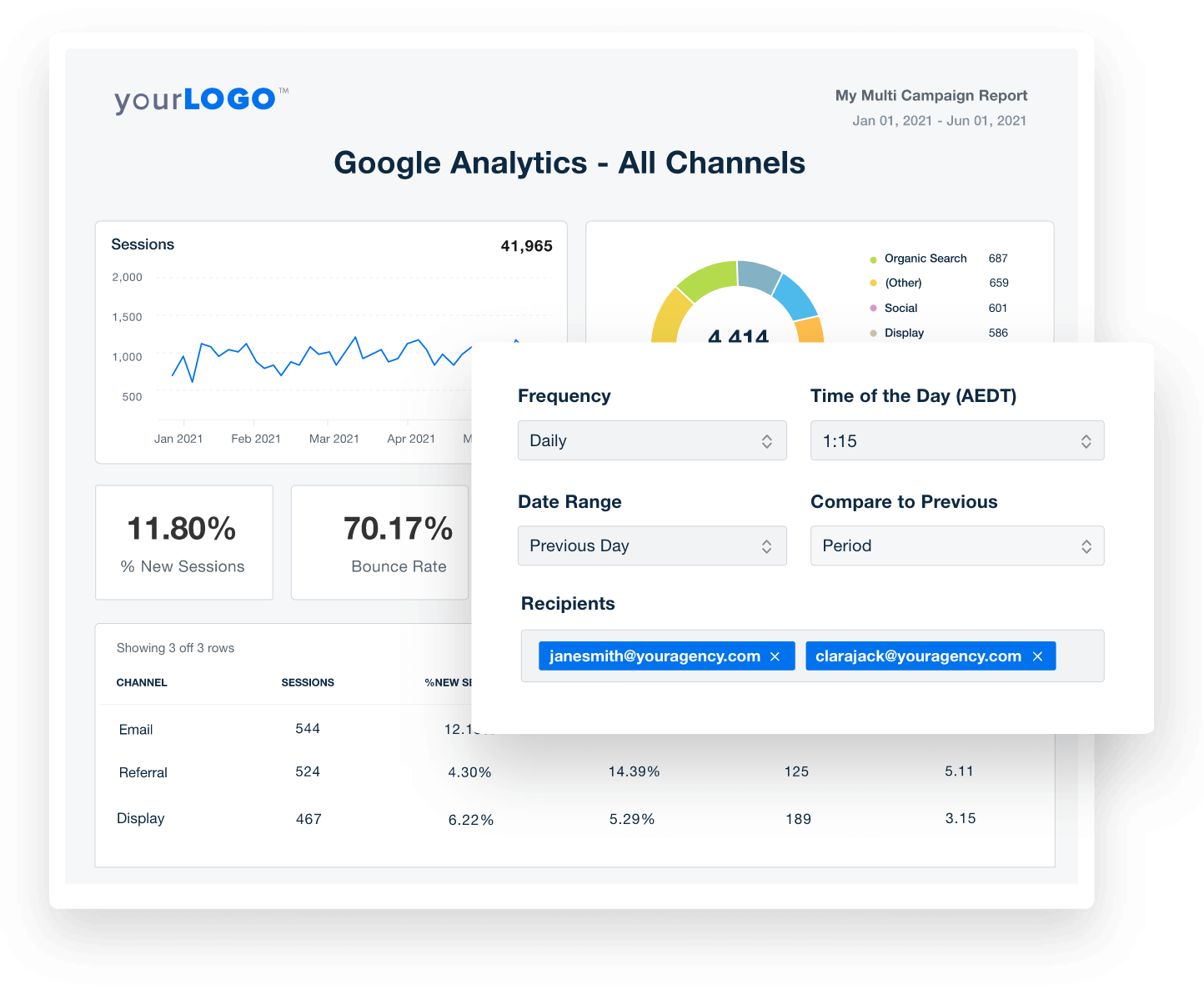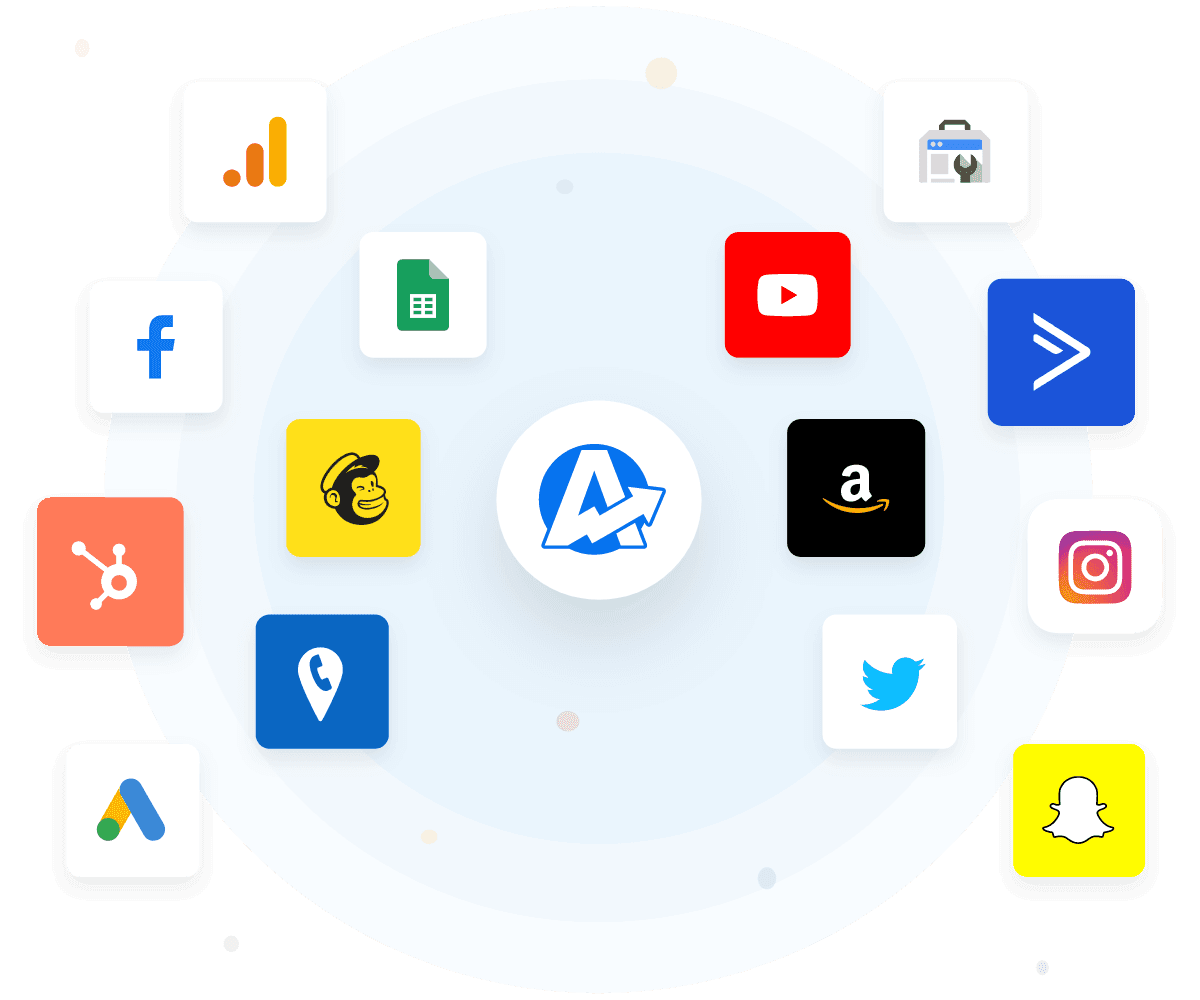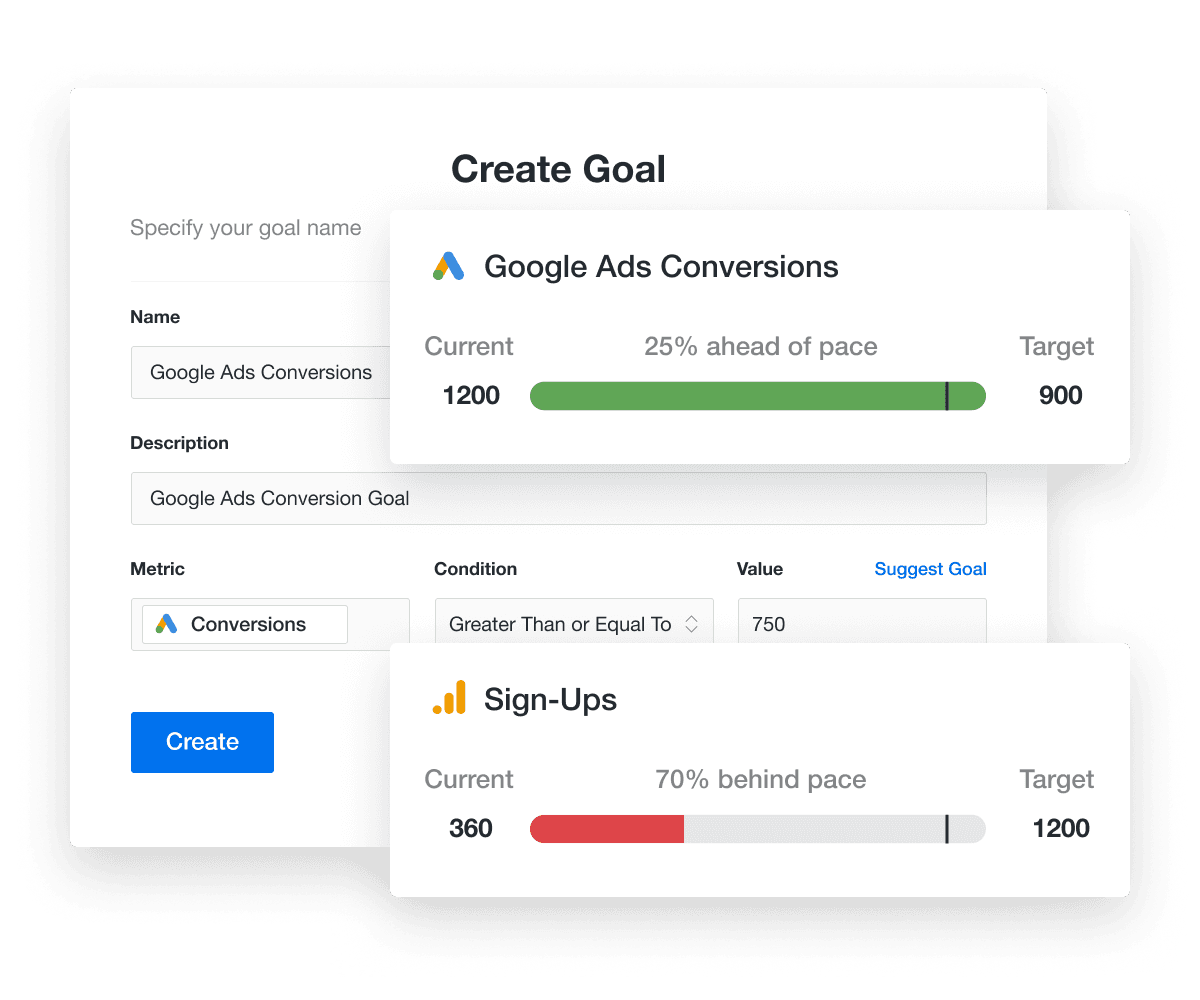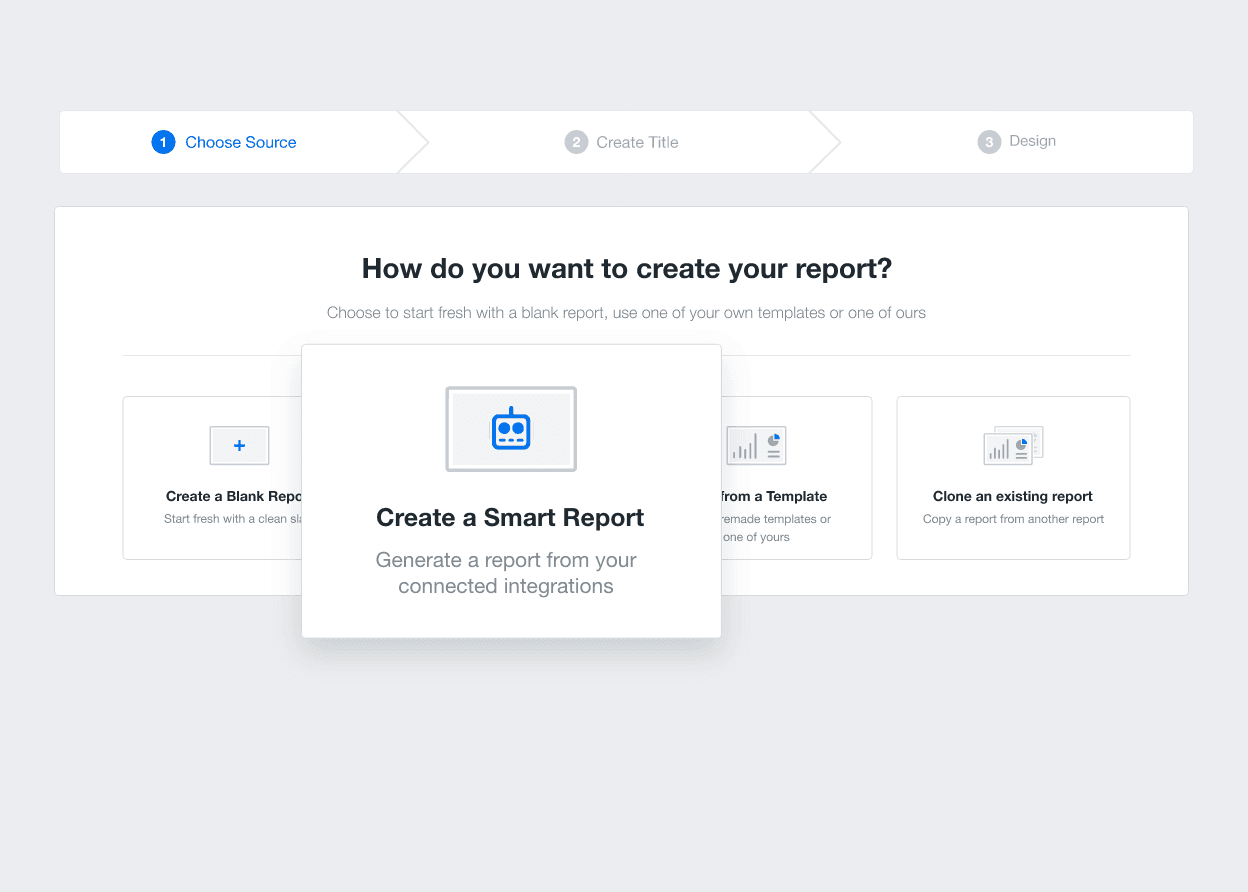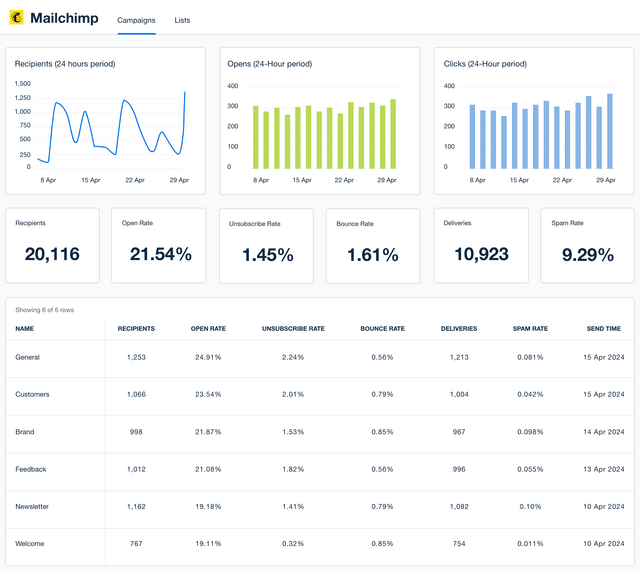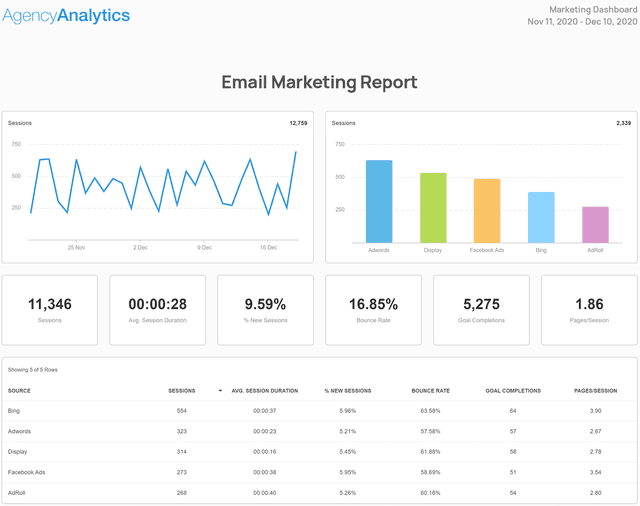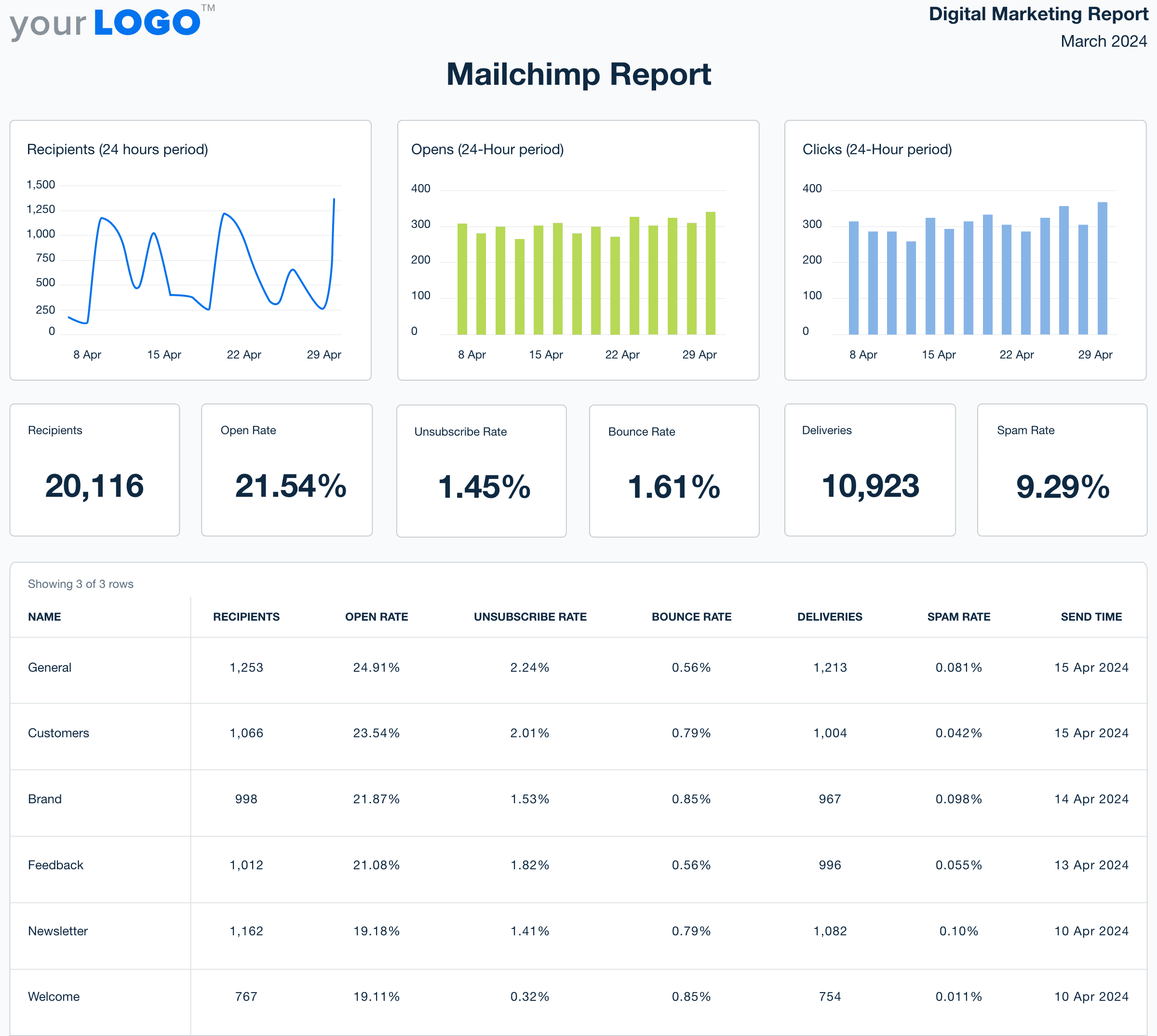
Mailchimp Report Template for Automated, Client-Ready Insights

Customizable Mailchimp Report Templates That Do the Heavy Lifting for You
Stop wasting time pulling data from Mailchimp. Use a customizable report template to turn email performance metrics into client-ready insights—fast.
Highlight opens, clicks, and conversions in a professional, branded report that keeps clients in the loop and shows exactly how your campaigns deliver results. With automated updates, your team skips the busywork and stays focused on strategy.
Custom Mailchimp Reports as Unique as Your Agency
Enhance Productivity
Create Client Reports in Minutes–Not Hours
Reporting doesn’t have to take all day. Create detailed reports with your client’s most valuable insights in a few clicks. Use AgencyAnalytics to pull Mailchimp data and stream it into a professional, sleek format.
Quickly access pre-built templates and customize them as needed. Reclaim billable hours and focus on what truly matters: Driving results for your clients.
13 Key Sections Included in the Mailchimp Report Template
